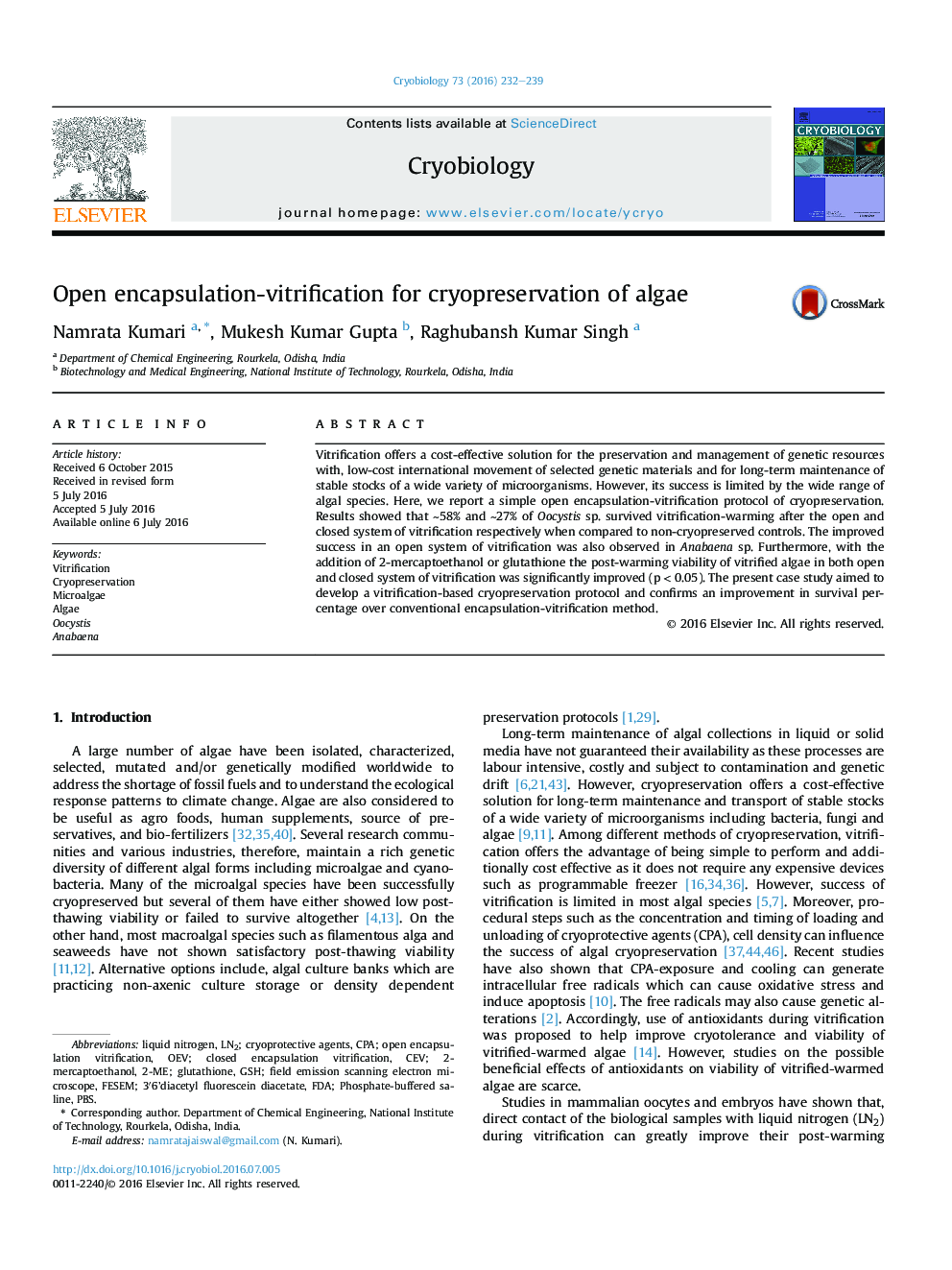| Article ID | Journal | Published Year | Pages | File Type |
|---|---|---|---|---|
| 5530825 | Cryobiology | 2016 | 8 Pages |
â¢OEV of Oocystis sp. has nearly 31% higher relative viability than CEV system.â¢Similarly â¼47% and â¼37% of Anabaena sp. were viable with OEV and CEV systems respectively.â¢GSH and 2-ME treatments significantly improved the viability of both Oocystis sp. and Anabaena sp. in OEV and CEV.â¢Although few cells were photosynthetically impaired during vitrification but log phase was achieved after a lag phase.â¢Bead size also influenced the viability percentage.
Vitrification offers a cost-effective solution for the preservation and management of genetic resources with, low-cost international movement of selected genetic materials and for long-term maintenance of stable stocks of a wide variety of microorganisms. However, its success is limited by the wide range of algal species. Here, we report a simple open encapsulation-vitrification protocol of cryopreservation. Results showed that â¼58% and â¼27% of Oocystis sp. survived vitrification-warming after the open and closed system of vitrification respectively when compared to non-cryopreserved controls. The improved success in an open system of vitrification was also observed in Anabaena sp. Furthermore, with the addition of 2-mercaptoethanol or glutathione the post-warming viability of vitrified algae in both open and closed system of vitrification was significantly improved (p < 0.05). The present case study aimed to develop a vitrification-based cryopreservation protocol and confirms an improvement in survival percentage over conventional encapsulation-vitrification method.
Graphical abstractDownload full-size image
